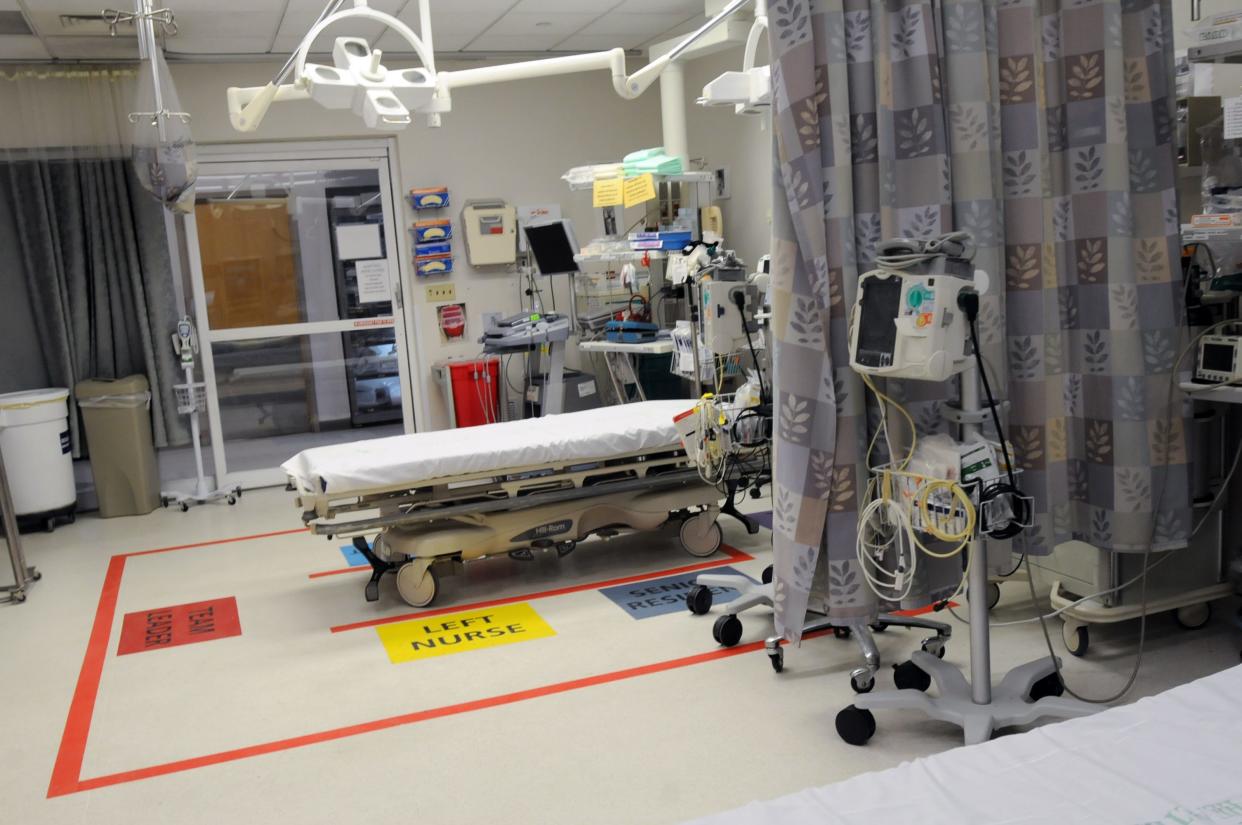The way omicron has spread in New Hanover is 'truly incredible,' health officials say

Hospital beds are once again filling up with COVID-19 patients as the omicron variant spreads rapidly across the country, and health officials are pushing residents to have more urgency toward what has been deemed a less severe version of the virus.
While symptoms tend to be more mild than past variants like delta, omicron has spread through the community much quicker than COVID-19 has in the past. In the last 14 days, New Hanover County has seen more than 5,000 new cases of the virus with a 31% positivity rate.
“The transmissibility of this omicron variant has been truly incredible. It is about as contagious as any virus can get,” said West Paul, chief clinical officer at New Hanover Regional Medical Center.
Now, Paul is urging the community to continue wearing masks and social distancing. Despite symptoms typically being less severe from omicron, the virus is still putting people in the hospital, and Paul said precautionary measures are a necessity to keep the capacity at the hospital down.
Paul said so far, the surge in omicron variant cases hasn’t been quite as strenuous as it was during the delta surge. At the peak of delta’s surge in New Hanover County, the hospital had around 160 patients, with COVID-19 taking up several floors of the facility. Now, it has about half that. Additionally, only 10% of COVID-19 patients are in the intensive care unit, whereas with delta, a quarter or more were in the ICU.
Omicron in schools:
Some Cape Fear school districts return to masks as COVID-19 cases surge
New Hanover schools will once again require masks as omicron causes spike in case
New Hanover schools received $95 million in COVID-19 relief funding. How is it being used?
But Paul said that’s also occurred in a much shorter period of time with omicron. Spikes of cases in the past happened over a period of three to five weeks, but with omicron, the surge has only taken two weeks so far, and Paul said he’s worried it will continue to go up.
“As this virus really burns through the population pretty darn quickly, we’re just trying to preserve our capacity in the hospital,” he said.
New Hanover Regional Medical Center is seeing more patients who were vaccinated being hospitalized with COVID-19, though they are typically people at higher risk of severe illness from the virus. Paul said the hospital rarely, if ever, sees someone who has gotten the booster vaccine with severe illness.
The hospital is also seeing more children in the hospital with the virus, and he said more people who have to be admitted into the facility, such as to give birth or for psychiatric care, are testing positive for the virus and requiring isolation and extra precautions from staff, though they are asymptomatic. Paul said those numbers still remain relatively low, and the majority of people coming to the hospital with COVID-19 are experiencing pulmonary illness or other symptoms.
In addition to that, the hospital has experienced a shortage of staff over the last two years as burnout becomes a real concern among doctors and nurses. Paul said past surges have left the staff fatigued and emotionally drained from the amount of critical patients and deaths they have seen.
Dining out amid omicron: What to know about the latest COVID spike when dining out
From masks to trial postponements: What to know about Wilmington courts amid omicron surge
With more and more staff having to quarantine because of COVID-19, Paul said the hospital has to be intentional with its staffing on any given day to maximize the number of beds available. That also means longer wait times in the emergency department and limited opportunity to schedule non-emergent surgeries.
“We’re thankful that we’re not seeing the ICU patients, but the burnout is still there,” he said.
Nationally, many major cities have seen COVID-19 cases begin to flatten or go down after record-breaking spikes in December and early January. Hospitalizations and deaths will likely still rise for weeks to come, though, medical professionals told USA Today. Models from the University of Washington predict COVID-19 levels drop much lower by February, USA Today reported.
Wilmington omicron spike: Omicron variant overwhelms testing in Wilmington, exacerbates holiday spike in cases
Paul said he hopes the omicron variant will burn itself out, become even less severe and eventually turn into a more manageable endemic than a pandemic. But doctors continue to be wary of making any definitive predictions on the virus as it continues to evolve, USA Today reported.
For now, Paul said, people should continue with diligence toward slowing the spread of the virus by wearing masks, social distancing and getting vaccinated and boosted.
“Omicron is still the coronavirus. It can still cause hospitalizations, particularly in those of us that have medical conditions,” he said. “Just because you don’t, you can spread it to someone who does.”
Reporter Sydney Hoover can be reached at 910-343-2339 or shoover@gannett.com.
This article originally appeared on Wilmington StarNews: New Hanover sees COVID-19 surge from omicron variant

